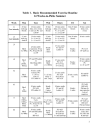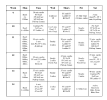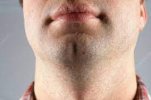You will do longer runs. If I remember right, the longest my kid did was in the 10k range (6.2 miles).
Of course, he was a high school distance runner, even though he hadn't really run consistently in about two years, so they were fairly easy for him outside of usual general fatigue.
If someone doesn't use something like the plan
@cbasalt1 posted (which I'm also not that big of a fan of because it has far too many interval/track workouts), my suggestion for run improvement and comfort with running in general would be to use a structured 5k training plan. Take I-Day as your "race" day, and go backward from there to match the plan.
<-------- For reference so you know I have some background in it, endurance athlete since the mid-80's. 9 marathon finishes including qualifying and running Boston twice, 2 time Ironman finisher, elite amateur cyclist, hundreds of running/cycling/triathlon finishes, previous USATF and USAC coach, etc. etc.
From a coaching perspective, you should not be running more than 5 days a week (unless you are already a seasoned runner who is also planning to try out for the cross country or track teams), should have two medium days, one "long" day, and two easy days. Increase by no more than 10% a week for mileage, spread out between the days, do not increase your paces much, and do not do any sort of fast/heavy track days until you have at least 8 weeks or so under your belt. Three weeks of build, one week "recovery." Ideally, four cycles at a minimum, so 16 weeks.
An example starting week taking someone who ran around a 6:30 for the CFA mile assuming not much running background:
M - 3 miles, steady effort - should be able to talk, but not hold a conversation - probably in the 7:45 - 8:15/mile range, after run, do 5 x 100meter "strides." That is not a sprint, but solid effort focusing on form.
Tu - 2 miles, easy - conversation can be held - probably 9:30/mile range
W - rest/cross-train (Get to the pool and swim! You will need that skill too)
Th - 3 miles, steady effort (see Monday), with same 5x100 strides after
Fr - 2 miles, easy (see Tuesday)
Sa - 5 miles LSD (long, slow distance) - slightly more effort than easy pace, probably 8:30 - 9:00/mile, should be an effort, but not exhausting
Su - rest
Next week (week 2) would be 4/3/rest/4/3/6/rest. Week 3 would be 5/4/rest/5/4/8/rest. Then recovery week - which in this case would be the same as week 1. Yes, this is an increase of more than 10%, but that is because the starting week was so low in mileage.
During all this, you are not increasing your paces unless you naturally are getting faster - which generally won't be the case with only 3 - 4 weeks in. In the next cycle, I might introduce a "tempo" run in place of the Thursday general runs. This would be 2 mile warm up, steady state effort that is much harder for 15 minutes, then 2 mile warm down. This is a continuous run with a harder middle section. For the hypothetical person above, this would probably be in the 7:15 - 7:30/mile pace. It ends up basically being a 2 mile easy start, 2 miles at a harder effort, and a 2 mile warm down.
Again, this is purely run focused. On any of the days, you can crank out your pushups and pull-ups, and do some core work.



